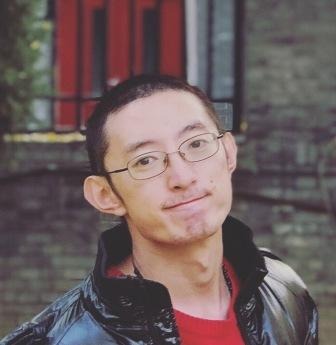For decades, the Chinese Communist Party’s official propaganda styles have been dismissed as outdated and unpersuasive. Repeated grandiose and praising rhetoric in state-run media outlets and hollow slogans in roads and streets may seem dull, clumsy and unimaginative for younger generation. However, in the digital age of the 21st century, these old-school strategies, although still in place, rarely present a comprehensive picture of the regime’s indoctrination efforts. The technological development now allows the propaganda authority to revamp its old strategies that were designed to target previous generation and repackage such information for millennials who are long-hour smartphone users, social media addicts, and lovers of jokes, entertaining videos and eye-catching memes.
Around the 90th anniversary of the founding of the People’s Liberation Army, the selfies in Chinese military uniform went viral across social media platform Wechat. These selfies in army uniform were generated by the app developed by the state-run media group People’s Daily. The users only need to simply take a selfie and select the era when he/she is going to join and retire from the PLA, and the app automatically completes the synthesis by inserting individual visage into glorious army uniform ranging from earliest revolutionary red army to modern-day PLA. Likewise, around the 70th anniversary of founding of the People’s Republic of China, People’s Daily revisits this strategy by launching an app allowing users to recreate selfies in costumes of 56 ethnic groups that form the Chinese population, so as to build up a celebratory atmosphere of national unity for the 70th birthday of the state.
These playful apps featuring interaction with users allow for sharing of their recreated selfies in the social media network. The development of such app is seen as a fresh move by the CCP’s propaganda apparatus to follow the urges of the Chinese president Xi Jinping to “fully leverage new technology and new application to innovate media publicity method” to deal with the challenging reality that younger generation get information from the Internet instead of from mainstream state-run media.
Scholars are referring this phenomenon as “authoritarian persuasion 2.0” where users are not passively receiving information feed from the propaganda apparatus anymore; instead, they are actively contributing to the propaganda content. However, the case of the playful app may represent “authoritarian persuasion 2.0” in some ways like participatory and interactive features, but it may go beyond the scope of this concept in other ways. First, instead of overtly calling for public participation, this app leveraged curiosity of users to covertly mobilize them to generate tons of military uniform selfies and further contribute to rising patriotic emotions. Second, the app didn’t provide practical lifestyle tips and advice free from politics for online users to consume, as is showed in research of the scholars. Rather, the app sugarcoated nationalism with entertaining facade, which is more implicit and sophisticated than what is conceptualized as “authoritarian persuasion 2.0”.
Does the regime’s well-developed communication strategy successfully engage the public? In terms of statistics, it does. The launch of this app around the 90th anniversary of PLA founding was effective and successful in formulating a strong patriotic atmosphere. As of August 7th, 2017, the app experienced more than 1 billion page views and 155 million unique visitors. Although the scholars find that the new propaganda strategy triggers unwanted negative feedback from the netizens who are discontent with the regime, in the case of the popular app, little clear evidence of mockery is found. There are two factors that may account for this. First, mocking and critical comments are censored by propaganda apparatus. Second, the app is beyond reproach for its entertaining element, though embedded with nationalism and politics.
Nonetheless, mixing funny or entertaining factors with serious politics also has downside risks. The entertaining app has attracted participants to generate uniformed selfies, but it’s difficult to produce solid educational effects on users. Many participants take selfies and share generated uniformed selfies across social media, but very few of them have historical background around the founding of the army. Likewise, many recreated selfies in costumes of 56 ethnic groups, but few can accurately name these ethnic groups. Of course, propaganda in the digital era doesn’t need to be perfect, and nor does the public need to be rational or knowledgeable to become a nationalists and patriotists.
Image credit: Dong Fang [Public domain], via Wikimedia Commons
The views and opinions expressed in this article are those of the author and do not necessarily reflect the official policy or position of The Geopolitics.

Keyu Chen served as financial translator for Goldman Sachs, J.P. Morgan and Deutsche Bank. He holds M.A. in international journalism and communication from Beijing Foreign Studies University. He’s interested in political communication, comparative politics and international relations.

